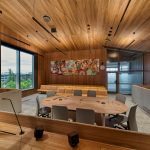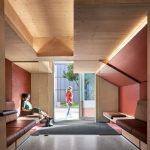
Sustainability
Sustainability
The Sustainability Award will be presented to the submission deemed to demonstrate and possess the most holistic response to the challenges of designing sustainably and succeed, as completely as possible, in meeting the objectives of the following three goals:
GOAL 1: HEALTH AND WELLBEING
- Promotes health and wellbeing for everyone impacted by the project.
- Emphasises whole-of-life performance: production, serviceable life, and after-life.
- Effective use of materials and processes free from harmful nasties.
GOAL 2: SUSTAINABLE CONSUMPTION
- Built to last. Built for easy repair. Built for easy repurposing and recycling.
- Effective use of climate-positive materials and processes.
- Supports a regenerative circular economy.
GOAL 3: INNOVATION
- Delivers innovation in achieving goals 1 and 2.
The Sustainability Award is open to projects across multiple typologies, including but not limited to, interior design, public and community spaces, and product design.
In addition to these qualities, the judges will be looking carefully and critically at the submission to determine the degree to which it authentically centres both humans and the environment at its nexus.
Submissions that include proven, measurable evidence of delivering on the intended sustainability objectives across the above qualities, will be well regarded.
Past Winners
2022
Melbourne Design Studios (MDS) with styling by Belle Hemming
Photographer credit: Marnie Hawson
2021
La Trobe University North and South Apartments
Jackson Clements Burrows
Photographer credit: Peter Clarke and John Gollings





